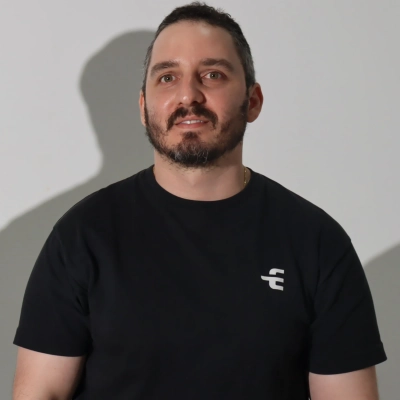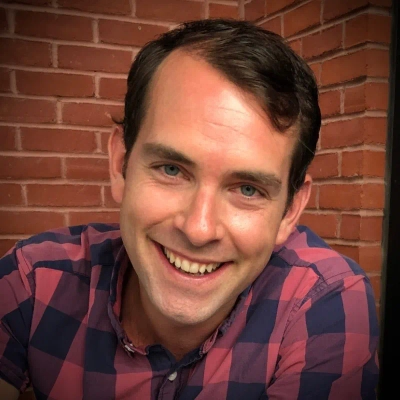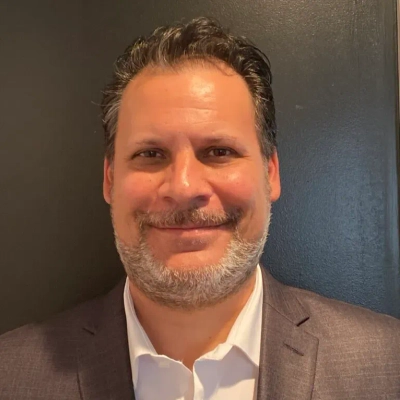25 Cash Flow Management Techniques That Saved Small Businesses During Difficult Times
Small businesses facing challenging times can strengthen their financial stability using proven cash management strategies endorsed by industry experts. This article presents 25 practical techniques that have helped entrepreneurs survive difficult economic periods while maintaining operational viability. From innovative payment structures to strategic forecasting methods, these approaches offer tested solutions for improving business cash flow without requiring complex implementation.
Track Customer Acquisition Costs for Growth
One cash flow management technique that really helped us during a tough period was tightening our focus on customer acquisition cost (CAC). Instead of cutting expenses blindly, we analyzed how much it actually cost to acquire each customer and whether that number was below our profit margin per sale.
Once we realized that we had a positive CAC, meaning each customer brought in more than it cost to acquire them, we reinvested every bit of profit from sales straight back into marketing. That created a self-sustaining cycle of growth instead of just trying to 'save money' by reducing activity.
It completely changed how we plan financially. Now, before making any big spending decision, we always look at the return in terms of CAC and margin. It's a disciplined but growth-oriented way to manage cash flow, not just surviving hard times, but using data to grow through them.

Require 50% Upfront Payment for Services
The best thing we did at FATJOE was require 50% upfront for our SEO packages. Suddenly, the slow months weren't so scary anymore. We stopped spending time chasing down late payments and could just plan the work instead. It was a huge weight off everyone's shoulders. Now it's standard for all our services because it just makes more sense. We get paid earlier and have less money hanging out there.

Build Custom Models to Predict Seasons
Here's what worked. We built custom models to predict when our e-commerce clients would drop off each season. Took us a few months to get the numbers right, but the forecasts gave us a heads-up long before the slow quarter hit. We could cut ad spend in advance, so the quiet months never left us short on cash. These days I can plan three months out without breaking a sweat.
Move Clients to Monthly Retainers
Moving Plasthetix clients to monthly retainers stabilized everything. Before, one late payment could throw off our whole budget, making team planning a mess. The stress on everyone went down when the billing became predictable for both sides. So now, our first move with new clients is a retainer agreement. We even base our hiring on that dependable income now, which is a huge relief.
Offer Free Samples During Slow Periods
During the 2020 slowdown, we shifted to offering free samples delivered within 48 hours instead of requiring showroom visits. This low-cost service kept customers engaged and converted remarkably well—about 60% of sample requests became sales. The $3 shipping cost per sample was nothing compared to losing deals entirely. Sometimes the smallest investment in customer convenience makes the biggest difference when cash is tight.

Reduce Payment Terms to Fourteen Days
We shifted our payment terms from 30 days to 14. It sounds small, but it completely changed how we operate. Before, even our best clients would pay on time at 30 days, but others would drift to 45 or 60, effectively turning us into an interest-free lender. As a small agency, that pressure builds fast.
With 14-day terms, we can start following up sooner and keep projects moving without that cash flow lag. It has made us more disciplined in forecasting, sharper with invoicing, and clearer about value because strong clients respect clear boundaries. It also reminded us that cash flow is not just numbers on a spreadsheet; it is the oxygen that keeps a business alive. Call it trickle-down economics on a micro scale; when cash flows smoothly at the top, everything else in the business runs better.

Diversify Into Stable Mobile Home Markets
The single-family home market got shaky, so we started buying mobile home parks. I figured people always need a place to live, so our rental income stayed steady even when other parts of the market were crashing. It made our income way more predictable and took the edge off the stress. If you're worried about downturns, it's a move worth looking at.

Extend Supplier Terms and Push Prepaid
When COVID hit, I got our suppliers to extend payment terms from 30 to 60 days. That extra month was crucial when guests disappeared. We pushed pre-paid dinners and gift cards like crazy, which brought in immediate cash. Those 30 days kept our staff paid and the kitchen working. Now I always offer pre-paid deals during slow seasons. It's not a perfect fix, but it's completely changed how I prepare for the unexpected.

Switch to Usage-Based Pricing Model
Switching our AI compute to usage-based pricing at Magic Hour was a game changer. We only paid for the video processing we actually used, so our costs finally started tracking with our revenue, even during those up-and-down months. Now I plan more conservatively and stick with models that can scale up fast. They're a lifesaver when the market shifts.

Create Separate Accounts for Different Purposes
One of the most effective cash flow strategies I implemented during a challenging period was creating a profit allocation system with separate accounts for taxes, profit, operating expenses, and owner pay.
Even as a CPA and Fractional CFO, I used to make emotional decisions based on my bank balance instead of strategy. Once I separated the money, I finally had clarity. I could forecast months ahead, plan for opportunities, and make financial decisions from control, not stress.
That structure is what allowed me to travel to New York for a speaking event and hire a full creative team — a content creator, makeup artist, and hairstylist — all paid for in cash. I didn't go into debt or second-guess the spend because every dollar already had a purpose.
That experience reminded me that cash flow isn't just about having money in the bank. It's about building systems that let you grow, take risks, and enjoy the rewards of your work without financial anxiety.

Implement Project Milestone Billing Structure
During one particularly tough phase, when client payments were delayed and expenses kept piling up, the cash flow move that truly saved us was shifting to a "project milestone billing" model instead of billing only at project completion. It meant clients paid in stages, at kickoff, mid-project, and final delivery, creating a steady inflow of cash without disrupting workflow.
This approach gave us breathing room, improved financial predictability, and reduced pressure on reserves. More importantly, it changed how we plan, now, every new project is structured with financial checkpoints that align with our delivery schedule. It taught me that cash flow health isn't just about cutting costs, it's about designing revenue rhythms that keep the business stable, even when times are unpredictable.

Discount Yearly Plans for Upfront Cash
We offered a 15 percent discount for yearly plans at Tutorbase and suddenly had this pile of cash. This was crucial when we were spending a ton on ads to get new customers. Knowing that money was already in the bank meant we could keep building features without freaking out about month-to-month income. After that, I always look for ways to get people to pay upfront.

Map Expenses Through Visual Color Representation
I spent one of our most challenging times creating a visual expense map of all our outgoing costs through hand-drawn colors that resembled a mood board. The process revealed our energy loss points through visual representation. I began to evaluate each expense for its alignment with our desired emotional impact on women who wear our clothing. The expense needed removal when it failed to match our desired emotional impact on women.
I now approach planning through an artistic perspective instead of traditional business methods. The budgeting process now focuses on energy expenditure rather than return on investment because we want our financial flow to reflect our core values of softness and lasting beauty and human connection. Our alignment with this perspective has brought unexpected strength to our operations.
Offer Lifetime Memberships to Early Supporters
When Aitherapy was still early, cash flow was fragile and every expense felt heavy. Instead of chasing new funding, we turned to the community already using the product. We offered lifetime memberships at a one-time price for our earliest supporters, giving them permanent access and recognition as founding members.
It brought in instant cash flow without debt or equity loss, but more importantly, it created loyal advocates who still promote us today. The lesson was simple: when you build trust first, your users can become your most meaningful investors.

Maintain Simple Yet Accurate Cash Forecasts
The most impactful cash flow management technique I've ever used and the one that got us through our toughest periods was creating a simple, accurate cash flow forecast and updating it consistently. Not a complex financial model, but a practical projection of incoming revenue, outgoing expenses, and the timing of both over the next 30 to 90 days (and sometimes further).
When cash was tight, that forecast became a lifeline. It let us see exactly when shortfalls were coming, what had to change, and how much time we had to act. It also clarified which levers to pull such as accelerating sales, delaying expenses, restructuring payments, or creating short-term targets to hit.
The key isn't just building the forecast, it's keeping it current. Reviewing it regularly provides visibility without obsessing over the day-to-day. I often compare it to running a race...you need to look up and see the road ahead, not just your feet.
What changed for us long-term is that forecasting stopped being a crisis tool and became part of ongoing planning. When you can see 90 days ahead with confidence, decisions stop feeling reactive. You're not guessing, you're anticipating. And that clarity turns cash flow from a stress point into a strategic advantage.

Generate Weekly Real-Time Cash Snapshots
During a tight stretch, we started running cash like a heartbeat, every Friday, DualEntry generated a live cash snapshot across all entities. No waiting for close, no spreadsheets, just real numbers in real time.
That single habit changed everything. Suddenly, cash wasn't a mystery at month-end; it was a signal we could act on mid-week.
It forced us to plan tighter, spend slower, and spot drift early.
The lesson: visibility kills panic. Once you can see cash moving, you stop managing emotions and start managing reality.

Establish Recurring Service Models for Stability
During a slow season a few years back, one of the best cash flow decisions I made was setting up a recurring service model for our residential pest control clients. Instead of relying only on one-time treatments, we offered quarterly plans that spread out payments and guaranteed ongoing service. That steady stream of predictable income made a big difference during months when new business slowed down.
Since then, it's become a core part of how we plan. Knowing our baseline revenue helps us budget for equipment, vehicle maintenance, and payroll without overextending ourselves. It also keeps our technicians consistently busy and our customers happier because they receive preventative care year-round, rather than just calling when something goes wrong.

Build a True Emergency Reserve Fund
One thing that made a big difference for us was creating a true emergency reserve fund. In the early days, any extra cash went straight back into growth—more trucks, new gear, marketing. But when an unexpected dip hit one spring, I realized how exposed we were. We began setting aside a percentage of each deposit into a separate account, inaccessible for regular expenses. Within a year, the fund covered two full months of operating costs, giving us room to breathe when business slowed or equipment broke down.
That change completely shifted my planning approach. Now, I prioritize sustainability over expansion. It's not the most exciting part of running a small business, but knowing we can weather a slow quarter without panic has made every other decision more confident and deliberate.

Track Weekly Instead of Monthly Trends
When things got tough early on, we started tracking our slow season revenue week by week instead of month by month, and that changed everything. Pest control in Alabama naturally dips in winter. However, by watching those smaller trends, we spotted patterns we'd been missing—like which neighborhoods still needed indoor treatments when outdoor work slowed down. That tighter tracking allowed us to adjust staffing and marketing in real time, rather than waiting for a bad month to hit.
Now, we use that same data-driven approach all year. It's helped us stay proactive instead of reactive, setting realistic goals and planning smarter promotions. It taught me that sometimes survival isn't about big cuts or huge wins—it's about paying attention to the small numbers that keep you steady.

Create a Structured Lean Winter Plan
Back in the early 2010s, we hit a slow season that caught me off guard. Revenue dipped hard during winter, but our fixed costs—vehicles, materials, payroll—didn't. Instead of taking out another line of credit, I started implementing what I called the "lean winter plan." I went through every recurring expense and cut anything that didn't directly serve our customers or employees. At the same time, I set up a reserve fund during our busier months that automatically set aside a percentage of every payment we received. It wasn't fancy, but it kept cash flowing when things got tight. That discipline carried us through that tough stretch without missing payroll or taking on new debt.
That experience changed how I think about cash flow completely. Now, we treat it like an all-season system instead of reacting to ups and downs. Every major purchase or expansion plan gets measured against that reserve strategy first—if it risks our stability, it waits. The "lean winter plan" taught me that sustainability beats speed. You don't need a massive budget to weather hard times; you just need structure, foresight, and the willingness to stay disciplined when it's tempting to spend.

Hold Weekly Pipeline Meetings for Progress
When cash was especially tight, I set up a weekly rental & sales pipeline meeting with my team to review every property and push for immediate progress--whether it was a price adjustment, a contractor update, or a targeted outreach to buyers. Staying laser-focused on moving inventory, even with small actions, kept money cycling and helped us avoid big bottlenecks. Now, I treat liquidity as an active, weekly process, not something to strategize about only when things feel urgent.

Schedule Payments After Invoice Due Dates
During a rough patch where multiple deals were dragging out longer than expected, I started scheduling all our vendor payments to align five days after our standard invoice due dates, regardless of the actual grace period. That tiny window let us capture incoming payments first and avoid dipping into emergency cash. It completely changed how I manage timelines now -- I treat every due date as a negotiation tool and build payment buffers into every contract to keep our reserves breathing.

Use Rolling Option Agreements for Properties
When cash was tight during the 2008 downturn, I shifted to using rolling option agreements--paying small upfront fees to secure distressed properties for 30-60 days while I lined up buyers. This minimized my capital exposure and kept cash flowing through assignment fees without large rehab outlays. Now, I build option-based deals into every quarterly plan because they provide liquidity safety nets during volatile markets.

Negotiate Longer Closing Windows With Sellers
Asking sellers for a longer closing window saved us at Lakeshore Home Buyer. It gave us breathing room to line up funding, which meant we didn't have to tie up so much cash. We kept doing deals even when things got shaky. I thought sellers would push back, but most were fine with it. Honestly, if you're in a cash crunch, just ask. It made a huge difference for our deal flow.
Sell Memberships Before Official Launch Date
We started selling Superpower memberships months before launch. The cash from our waitlist changed everything. Suddenly we could test different prices and actually negotiate with our suppliers instead of just taking their first offer. Having that money upfront let us build out our operations with way less stress. My advice to other founders: find a way to get your first customers to pay early. It makes everything else easier.






